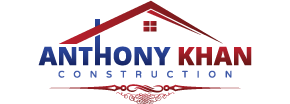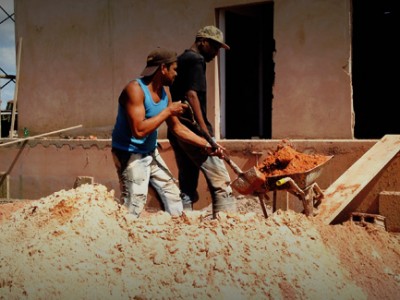How to Finance Your Home Construction!
Sometimes prospective homeowners opt to construct their dream home as they consider this to be a more cost effective solution to their housing needs. Construction does, however, add some challenges to the home ownership and financing process.
It is important to pay attention to key issues in order to expedite the mortgage process, and, more importantly, to facilitate long-term cost savings to the mortgagor.
As with the purchase of a home, one of the first issues that must be addressed when deciding to construct is ascertaining the amount of financing for which you can qualify. Doing this is key to determining the size and cost of your home, and also the level of decorative detail that can be accommodated. The total financing requirement is of even greater significance if the cost of the land acquisition must also be considered.
Having determined how much you can afford, here are some of the other significant issues and costs regarding the construction of a home that should be considered.
- Approvals from Authorities
- Builder’s Estimate & Quantity Surveyor’s Report
- Construction Financing
- Completion Certificate
Approval from Regional and other Government Authorities
It is critical to the mortgage process that approvals are obtained in respect of:
Approval for Residential Development
It is important that you obtain from your Vendor prior to committing to the purchase, documentation confirming that the parcel of land being sold has been approved for residential development. This approval is obtained from the Town and Country Planning Division, and there is no cost to obtaining such approval.
If this information is not available at the time that you are negotiating the transaction, it is advisable that you visit the nearest Town and Country Office and meet with an Inspector. He/she should be able to confirm whether the parcel of land to be purchased is approved for home construction purposes.
Your Building Plans
After you have received your drawings or house plans, either from your Architect or Draughtsman, these must then be forwarded to the Town and Country Planning Division, as well as the Regional Corporation for approval. The fees that are payable to your Architect and/or Draughtsman may include their service fee for obtaining these approvals on your behalf. While you may choose to obtain these approvals on your own accord, this can be a time consuming exercise.
Environmental Management Agency (EMA) Approval
Though sometimes overlooked, this is also important, particularly for those homeowners who are desirous of constructing on hillsides or in areas where significant excavation is required. In such instances, a Certificate of Environmental Clearance (CEC) must be obtained from the EMA. The cost of this Certificate is approximately $500.00.
Builder’s Estimate
With your approved plans in hand, your next step is to obtain both a detailed Builder’s Estimate, as well as a Quantity Surveyor’s Report on your proposed home. For mortgage purposes, your builder must provide a detailed breakdown on the cost of the materials and labour required to complete each stage of the construction process, from foundation to finish. This breakdown will also be used as the basis upon which the funds to facilitate construction are disbursed.
Quantity Surveyor’s Report
The Quantity Surveyor’s (QS) report validates the estimates provided by your builder. The cost of this report is based on a fee scale that is governed by the Quantity Surveyors’ Association. This report enables a reasonability check of the cost of construction as advised by your builder. Where the QS report reflects a material variance over the Builder’s Estimate, the Quantity Surveyor may review the building plans to identify and quantify areas of potential cost savings. This will not only bring your construction cost in line with that which was proposed by your builder, but more importantly in line with the amount of mortgage loan for which you are eligible.
It is critical to the management of your construction costs that you adhere to the cost saving strategies that are recommended in the QS report. At times, prospective homeowners in their exuberance to build their dream home, ignore the recommendations contained in the QS report on cost savings, and ultimately find themselves either incurring significant cost-overruns or unable to complete construction. Don’t let this happen to you!
Construction (Bridge) Financing
More often than not, financing is required to fund the construction of the property prior to a long-term mortgage facility. This is provided by way of a ‘Bridging Facility’, which is essentially a short-term loan usually not exceeding 1 year that is granted to enable the construction of the residence. TTMF provides a bridging facility at the same rate of interest that will apply to the long-term mortgage financing.
The funds for the Bridging Facility will be disbursed in accordance with the schedule provided by the builder’s estimate and certified by the QS report. Interest on the Bridging Facility is payable monthly on the balance of the loan outstanding. When the loan has been fully drawn, Bridging Interest continues to be due monthly on the total loan amount, until the Completion Certificate is submitted.





